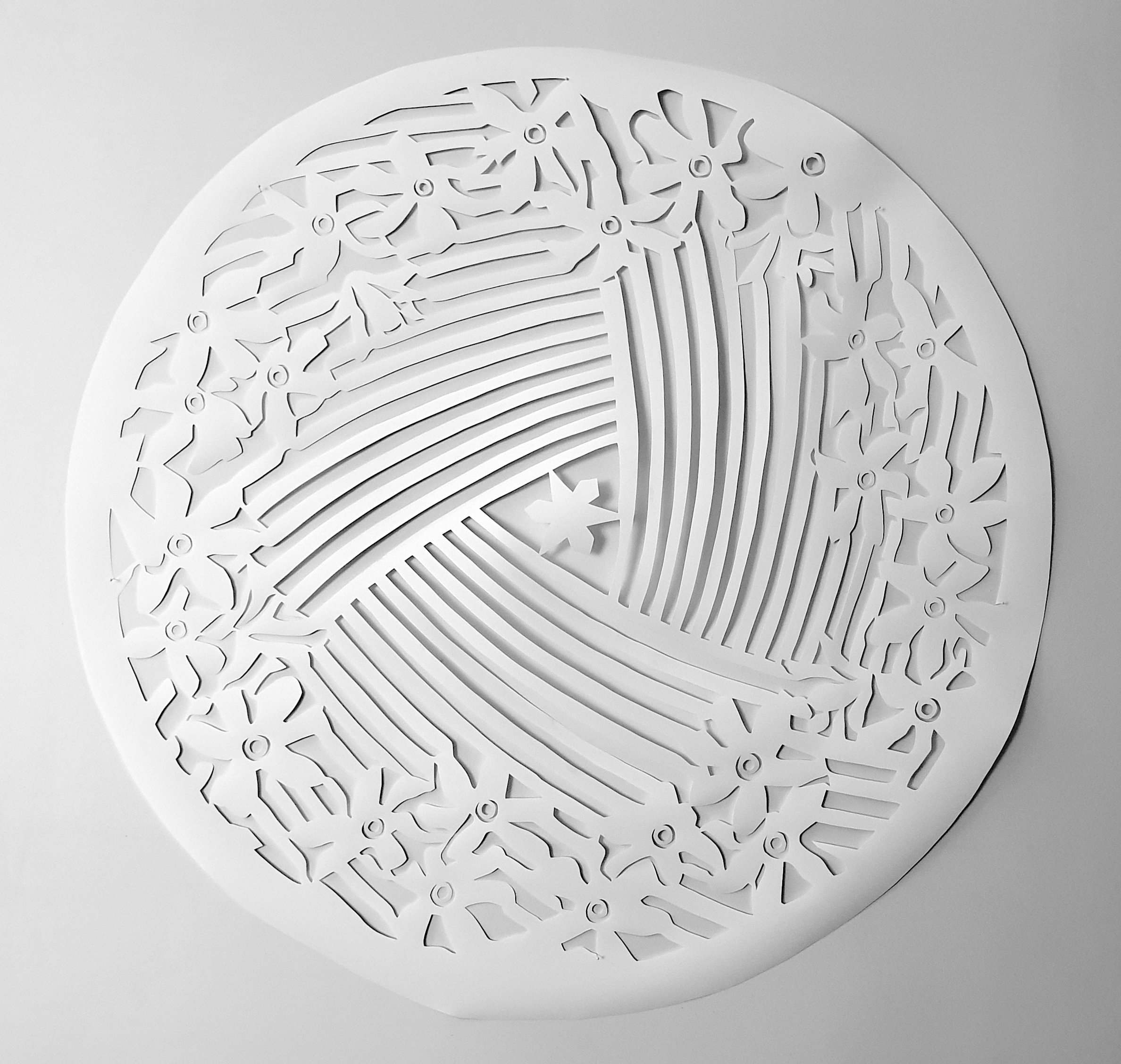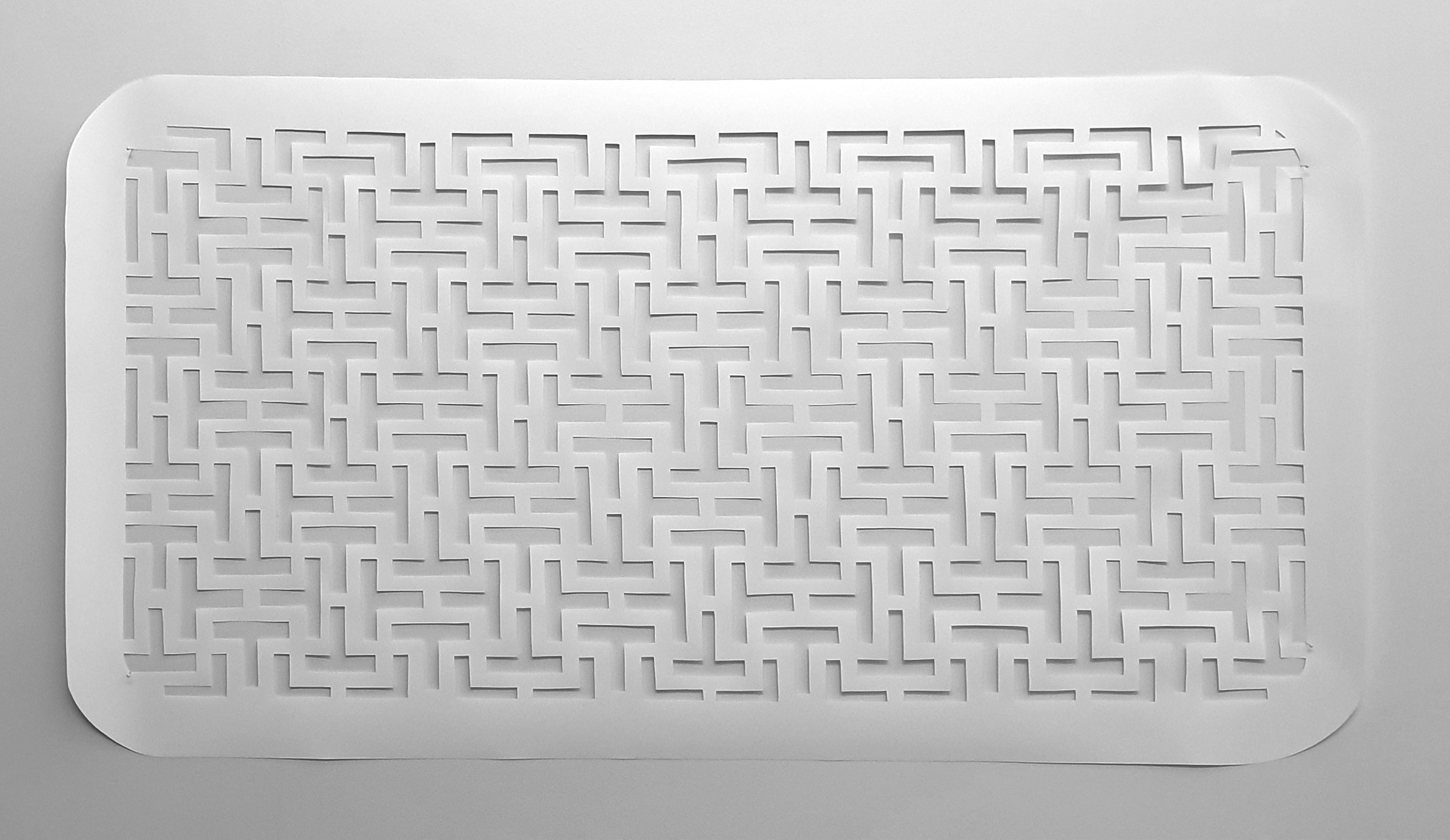
Furusato: Patterns from Pilgrimage
Furusato: Patterns from Pilgrimage" features a new series of large-scale hand-cut paper works that map my journey in Japan exploring my grandmother's and ancestral history through patterns documented along the way. My maternal grandmother is Japanese, and our family has an amazing modern and ancestral history that continues to inspire me and my practice. My grandmother met my Australian grandfather in Japan after WWII during the British Commonwealth Occupation Force, where they married and had my aunty. Once the White Australia policy changed in 1953, they moved to Australia where my mother was born - in fact, she was the first baby born to a Japanese War Bride in Queensland.
My research and conversations with my mum and grandmother over the years has made me realise what a pioneering time this was. After WWII I know my mother experienced a lot of social stigma as her father was seen as marrying the enemy at the time. The sentiment towards Japan and Japanese people after the atrocities committed during the war took a long time to heal, so during this time my grandmother tried as hard as she could to assimilate into Australian culture. As a result, my mother wasn't as exposed to her Japanese heritage as much as she may have been today. I feel it is part of my duty as the next generation to preserve this part of our maternal heritage by connecting through language, tradition, custom and aesthetic found within my work. Further back in our family's history, my grandmother has always told us we have Samurai ancestry dating back to the 17th century. Katagiri Katsumoto is the name of our ancestor who also happens to be one of the famous seven samurai in the battle of Shizugatake (which was adapted into the Western version The Magnificent Seven).
In late 2018, I was funded by Asialink Arts for a Creative Exchange in Japan, which included a six-week residency in the beautiful regional island of Kyushu, then an exhibition in Tokyo. When I travelled between the residency the gallery, I mapped out and visited all the places my grandmother told me our ancestor was connected to, as well as her own history meeting and marrying my Australian grandfather during the Occupation. Along this pilgrimage I documented patterns on the manhole covers in each locality, mapping the places my feet were travelling along, imagining how my ancestors walked along these same paths. I didn’t know at the time if or how these may be used later.
The journey was a life changing experience for me. As an artist it validated my personal history, and the narrative I wanted to connect with through my work. I realised my purpose as an artist was to continue the connection with my Japanese heritage, through studying and celebrating the Japanese design aesthetic within my work. Another discovery made during this trip was when I visited a museum to learn more about our Samurai Ancestor Katagiri Katsumoto. I had bicycled and walked there with only a small backpack, and the museum curator was surprised so find a foreigner out in the regional area. He explained to me that this Samurai didn’t have any direct lineage, not having children. We both realised my ancestor was in fact his younger brother, Katagiri Sekishyu, who was a famous Tea Master that developed a form of tea ceremony between Samurai and diplomats that we still know in some form today. He inherited the nobility from his Samurai brother and that has passed down to my family, to where my grandmother still talks highly of our heritage.
The concept of furusato is nostalgia for the past, remembered, desired, or constructed (Robertson, 1988). Generally, the word means "one's home" or "one's hometown", but it is also perceived to have connotations of a place that is not a city, and it invokes a strong sense of nostalgia with warm and positive emotions. This fits beautifully with my experiences walking along the path of my ancestors and of grandmother in Japan. It is also the name of a Japanese kid's song, which I will never forget, as my blind great Aunt ninety-five years' young sang it to me when I met her for the first time during this trip. It is the same song she used to sing to my grandmother when she was a child.
Furusato: Patterns from Pilgrimage, 2020, series of twelve hand-cut polymer works, exhibited at Noosa Regional Gallery, November 2020.
Photography: Elysha Rei, 2020











